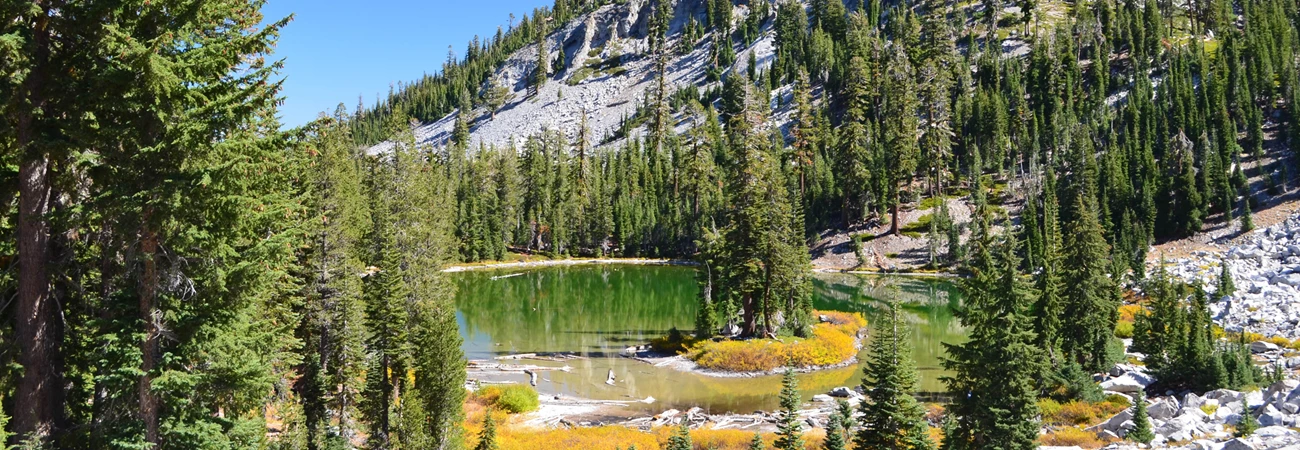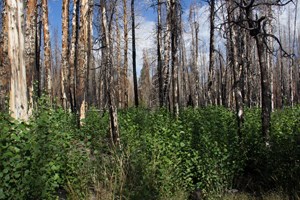
NPS Photo/ Amanda Sweeney ConifersMost of Lassen Volcanic National Park is forested, with the distribution of conifers affected by elevation. Whitebark Pine 
NPS Photo/ Hoan Kichen AspenLassen is home to a few species of deciduous trees, including quaking aspen and cottonwood. Both species can be seen at the Hat Creek and Devastated Areas. The suppression of forest fires has led to natural succession replacing aspen with conifers and vegetation. Aspen groves need fire or other disturbance to stimulate sprouting and control conifers which encroach on aspen groves. Read about aspen regeneration in the wake of the 2012 Reading Fire.
|
Last updated: April 22, 2020
